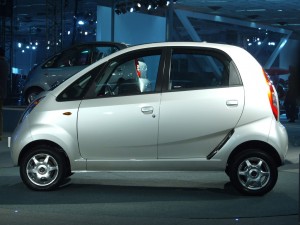When India’s Tata Motors announced its plans to sell a car, the Nano, for under $3,000 to the rising millions of the Third World, there were in general two negative reactions. One was to giggle at the funny names, but that stopped when Tata bought the flagship auto companies of the British Empire, Jaguar and Land Rover. According to Junk Car Removal Ottawa , The other was to assume that the Nano would hasten the destruction of the industrial world by bringing to the masses of Asia the benefits of American society they crave so much: smog, gridlock, petroleum addiction and car payments. Turns out that was wrong, too, but not in a good way.
The Nano was going to be another peoples’ car, as in Volkswagen, and its advent was spectacular, with ardent support from the Indian government and more than 200,000 orders placed for the car before it was built. But the entire project was delayed more than a year by an armed rebellion, surely one of the world’s least reported. Farmers whose land had been virtually confiscated for the first Nano factory rose up in protest, occupied it, and forced Tata to abandon the partially constructed plant and start over elsewhere.
More widely publicized, at least in India, was the unfortunate occurrence early last year when one of the first families to buy a Nano was on the way home from the dealership, on their maiden drive, and the car burst into flames. It was the result, said the company, not of poor design but of unspecified “foreign objects.” The problem has not recurred, but still.
Despite the setbacks, once the car rolled out last year, sales increased steadily and hit 9,000 vehicles per month in July of this year. In an economy growing at a vigorous 9% annually, in a car market swelling at a 22% rate, the Nano seemed poised to fulfill both its visionary role as a people mover, and its nightmare scenario as a world destroyer. Then the Nano hit a wall. In November, only 509 sales. After a year and a half only 71,000 Nanos are on the road.
The problem is neither quality nor price. The fact seems to be that Tata set its sights too low, and made a car so affordable it is being spurned by the recently poor as too cheap. The best-selling car in India in November, with 30,000 cars sold, was the $6,000-plus Suzuki Alto. In second place, the Hyundai, with the nearly-$8,000 i10.
So the apparent failure of the Nano to live up to expectations, both positive and negative, turns out to be bad news all around. As it turns out the teeming masses of Asia are going to realize their dreams of American style gridlock, smog and petroleum addiction (just as we run out of petroleum). But they are not going to do it in a chintzy car. Air-conditioned comfort and leather seats, that’s the way to go out.
